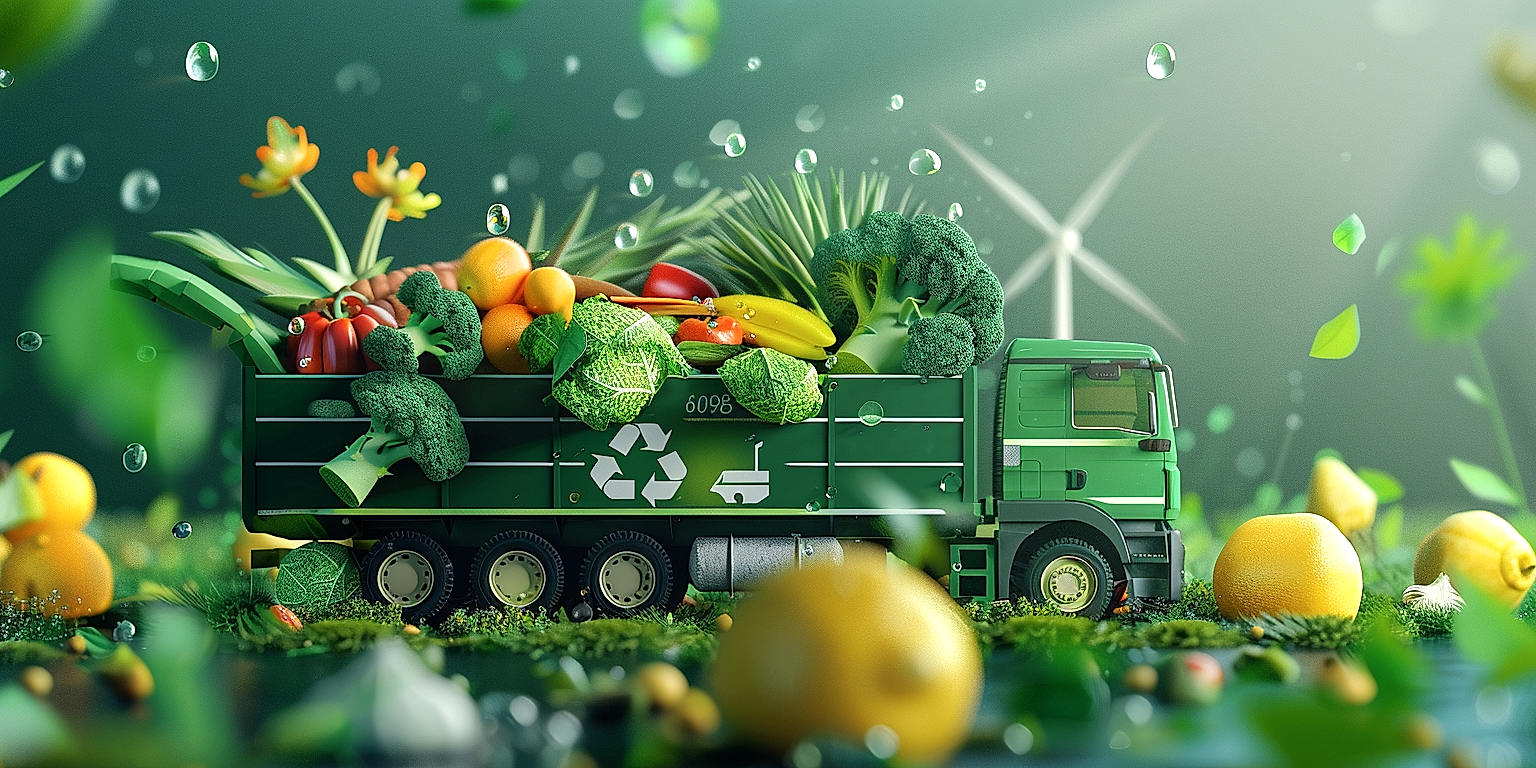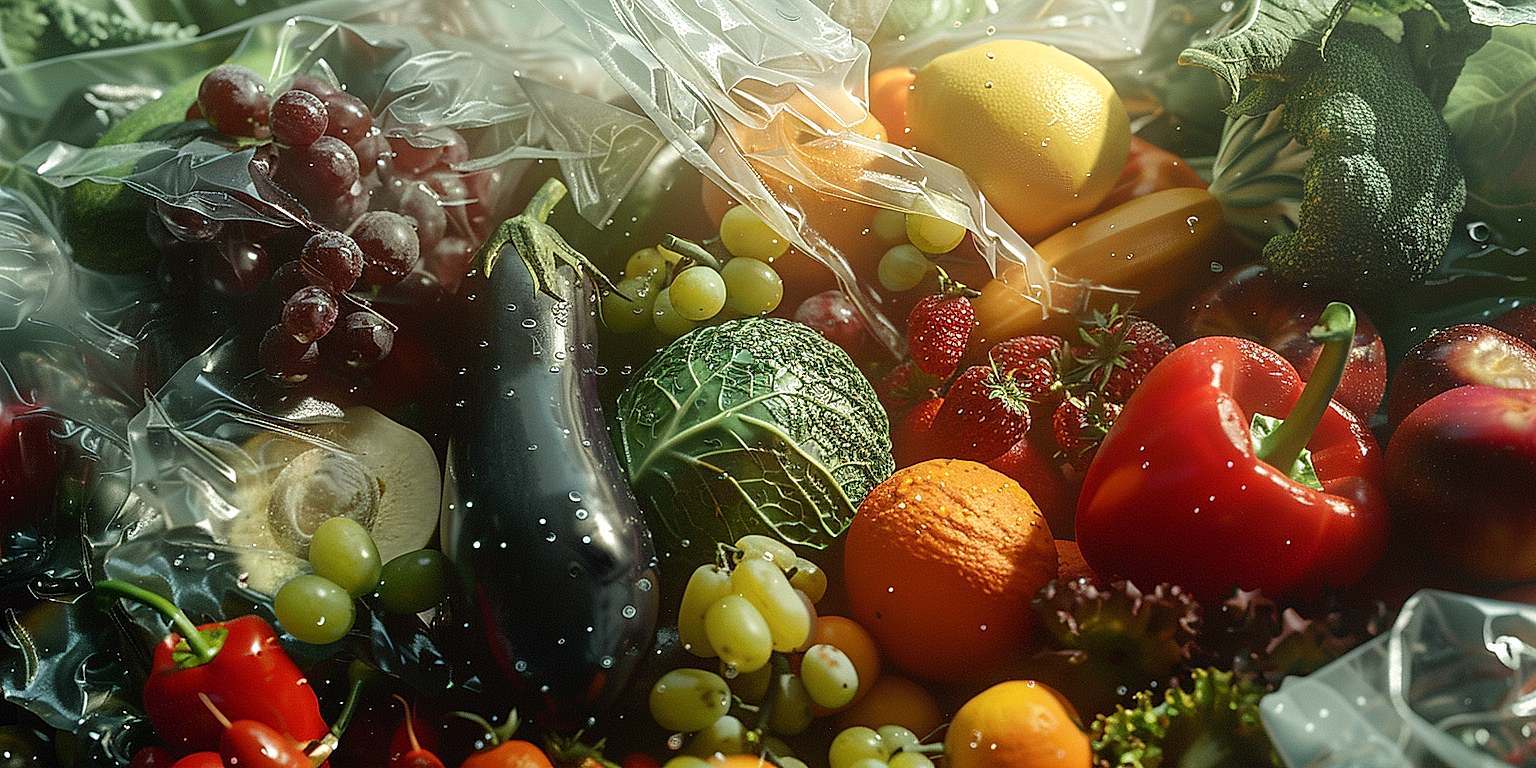Sustainability is becoming increasingly crucial in every business domain, and the sector of produce distribution is no exception.
This ever-evolving landscape requires consistent monitoring and evaluation, for which key performance indicators provide an insightful solution.
In an era where responsible practices are a key differentiator, implementing effective metrics can accelerate the shift towards green operations.
However, identifying the most relevant metrics can be a complex process.
This piece will delve into the pertinent parameters to measure sustainability, offering a comprehensive guide for businesses in produce distribution.
It aims to encourage environmentally friendly practices to foster a greener, more reliable supply chain landscape.
Contents
Metrics To Track Sustainability In Produce Distribution
1. Carbon emissions during transportation process
One of the critical aspects of sustainability is the minimization of greenhouse gas emissions, particularly carbon emissions, throughout the supply chain process.
The transportation stage of produce distribution, being a significant contributor to carbon emissions, requires meticulous monitoring and effective management to ensure a sustainable process.
Understanding the carbon emissions during transportation can greatly aid seet reduction targets and create a more sustainable produce distribution process.
Produce distribution, by virtue of the immense distances that often need to be covered, sees the frequent use of heavy-duty vehicles and aircrafts – both of which are significant CO2 emitters.
Thus, tracking carbon emissions during transportation is a key metric for assessing the level of sustainability in produce distribution.
This can involve the use of technology to monitor fuel efficiency and thus, indirectly, carbon emissions.
Another aspect to consider is the impact of refrigerated transport, which is often necessary to maintain the freshness of produce over long distances, but can also be a significant source of carbon emissions.
By assessing the emissions produced during the refrigeration process and the overall transport phase, companies can provide a highly accurate account of their carbon emissions and identify potential areas for improvement.
This data can then be used to inform decisions about more sustainable modes of transport, fuel-efficient vehicles, and other emission reduction strategies.
A substantial reduction in the carbon emissions during the transportation stage can significantly decrease the overall carbon footprint of the produce distribution process.
Moreover, companies who show a strong commitment to reducing their carbon emissions are more likely to earn the respect and loyalty of environmentally-conscious consumers.
For instance, choosing sea freight over air freight, or rail over road, can often result in lower emissions and also result in significant cost savings.
Additionally, improving the loading efficiency of vehicles can reduce the number of trips necessary, further reducing carbon emissions.
Using local sources for produce can also greatly reduce transportation distances, and thereby carbon emissions.
Therefore, tracking and managing carbon emissions during the transportation stage is crucial, not only for staying within global climate targets, but also for achieving a truly sustainable distribution process.
2. Percentage of Waste Reduction Initiatives
Waste reduction is an integral element in sustainability, especially in the context of produce distribution.
Programs aimed towards the reduction of waste in produce distribution are not only beneficial to the environment, but can also improve the cost efficiency of the business.
Tracking the percentage of waste reduction initiatives is an important metric that allows companies to measure their progress towards sustainability.
To accurately track this metric, it is crucial to establish a baseline or an initial data against which future courses of action can be assessed.
One viable approach is to conduct an inventory of all the waste produced in the distribution process and then execute strategies to reduce these numbers.
Some of the effective ways to reduce waste include improving inventory management to avoid food spoilage and embedding waste diversion practices such as composting and recycling.
Moreover, companies should venture into designing packaging and logistics that are more efficient to lessen material waste throughout the distribution process.
An increase in the percentage of waste reduction initiatives signifies a step towards a more sustainable business model.
This not only yields positive impacts on the environment but promotes monetary savings, given the potential reduction in waste disposal and material costs.
Increased emphasis on waste reduction can also foster a positive image among consumers, which can boost the business’s reputation and increase customer engagement.
Moreover, setting quantifiable goals for waste reduction provides clear direction and enables businesses to make informed decisions.
By consistently evaluating the percentage of waste reduction, businesses can identify what strategies work and what still needs to be improved.
Data transparency is also essential in this process since it invites constructive feedback and empowers stakeholders to participate in the waste reduction initiatives.
Moving forward, the application of innovative technologies can be leveraged to further streamline processes and minimize waste generation.
These range from advanced packaging solutions to sophisticated data analytics tools that can provide deeper insights into waste production.
Finally, learning from the best practices of other organizations can also guide businesses in enhancing their waste reduction strategies and demonstrating a strong commitment to sustainability.
3. Level of Water Usage in Production
Water is a central component in the production process of agricultural goods, being used both directly and indirectly.
When striving for sustainability in produce distribution, the quantity of water utilized at different stages of production becomes a key metric to monitor.
Excessive water usage not only depletes a valuable resource, but can also lead to issues like soil degradation and water pollution.
Through tracking water usage, companies can identify opportunities to optimize their processes, reducing their overall environmental impact and becoming more sustainable.
Evaluating the volume of water used in the production process is a critical step towards achieving sustainability in produce distribution.
In the agriculture sector, water is used for a variety of purposes, including irrigation, pest and disease control, and post-harvest washing.
Thus, it becomes important to track and analyze the specific ways in which water is used, to identify where wastage may occur, and implement strategies to prevent it.
In addition, by participating in water accounting and auditing practices, companies can ensure they are meeting compliance with water-related regulations and guidelines.
Implementing water-efficient appliances and machinery can reduce the level of water usage in production substantially.
The collection and reuse of rainwater is another strategy that can be adopted to further decrease the reliance on freshwater sources.
Furthermore, the incorporation of water-saving techniques such as drip irrigation or precision agriculture can significantly lower water usage levels.
Aside from physical strategies, educational programs and training of farmers on the efficient use of water can be hugely beneficial towards the goal of sustainability.
Tracking water usage and implementing necessary changes not only contributes to sustainability but also brings about cost-saving benefits in the long term.
Moving forward, companies must continue to monitor their water usage and make the necessary adjustments to ensure ongoing commitment to sustainable practices.
Through these combined efforts, the agricultural sector can make significant strides towards reducing its environmental footprint and contributing to the growth of a more sustainable future.
4. Percentage of Renewable Energy Used
Renewable energy is a critical metric in tracking sustainability in the distribution of produce.
The adoption of renewable energy sources significantly reduces the reliance on fossil fuels, which is a major step towards achieving sustainability in any business, especially in produce distribution.
A high percentage of renewable energy used in the logistics process signals a strong commitment to eco-friendly and sustainable practices.
Measuring the percentage of renewable energy used in the distribution of produce helps businesses understand how far they have come in achieving their sustainability goals and in what areas improvements are needed.
A comprehensive report on the use of renewable energy should include the type of renewable energy sources used, the number of equipment or vehicles powered by renewable energy, and the amount of CO2 emissions saved by using renewable energy instead of traditional fossil fuels.
Produce distribution companies using solar, wind, or hydroelectric power in their operations are effectively reducing their carbon footprint significantly, making a great contribution to environmental conservation.
Moreover, they are also setting an example for other organizations in the industry, showing that running a business in a sustainable way is possible and beneficial.
By using renewable energy sources, not only are these companies improving their corporate image, but they are also reducing their operating costs in the long run, as renewable energy is generally cheaper than fossil fuel.
To evaluate if the percentage of renewable energy used is increasing, companies should track this metric regularly over a defined period of time.
The collected data can then be used to determine if the company’s renewable energy efforts have been effective and consistent, which reflects its ongoing commitment to sustainability.
Investing in renewable energy might seem costly initially. However, considering the long-term sustainability benefits and cost savings, it’s a price worth paying.
The use of renewable energy is not only a pathway to sustainability but also a way for companies to differentiate themselves in a market where consumers are becoming increasingly conscious of the impact their purchasing decisions have on the environment.
Therefore, having a high percentage of renewable energy use can help a distribution company increase its market share and improve its reputation among its customers and in the industry.
Transparency about the percentage of renewable energy used can also foster trust between the company and its stakeholders, which leads to stronger business-customer relationships, ultimately contributing to business sustainability as well.
In essence, the percentage of renewable energy used is a fundamental sustainability metric that produce distribution companies should consistently track and aim to increase.
5. Use of Recyclable Packaging Materials
One prevalent sustainability factor in produce distribution is the use of recyclable packaging materials.
Companies involved in the production and distribution of food items are increasingly embracing the use of recyclable materials to package products.
This is driven by the growing need to reduce carbon emissions, cut down on waste, and promote more eco-friendly operations.
Metrics tracking in this area focuses on the percentage of total packaging which stems from recycled or recyclable materials.
Often, this is expressed as a ratio, comparing the amount of packaging from recycled materials to the total production packaging quantity.
For instance, if a company used 75% recycled packaging materials, its sustainability rate in this metric would be considered quite high.
A company with a lower percentage, say 30%, would be seen as less sustainable in terms of packaging materials.
The use of recyclable packaging also has a direct economic impact aside from contributing to environmental conservation.
Reducing the overall waste produced leads to lower costs and greater operational efficiency in the long run.
This is because recyclable materials can be reprocessed and reused, creating a cycle which saves resources.
To maximize the impact of using recyclable packaging materials, companies need to communicate this to consumers.
They can include a note or marker on the packaging to indicate its recyclability.
The process of recycling packaging materials also requires a well-developed and efficient recycling structure.
This means having clear processes for waste collection, segregation, and potential reprocessing into new packaging materials.
The use of recyclable packaging in produce distribution is therefore a multifaceted metric. It involves careful tracking, resourceful planning, and consumer education.
The Bottom Line
Reducing environmental impact is a critical challenge confronting many industries today.
Our analysis has highlighted several key areas where improvements can be made including carbon emissions during transportation, waste reduction initiatives, water usage in production and usage of renewable energy sources.
Furthermore, the use of recyclable packaging materials has been identified as a significant sustainability strategy.
The culmination of findings suggests that a comprehensive approach, integrating all these aspects, can significantly contribute to overall environmental sustainability within the industries.
While progress has been made, there is vast potential for industries to enhance their green credentials, emphasizing the need for continuous commitment to sustainability targets.




